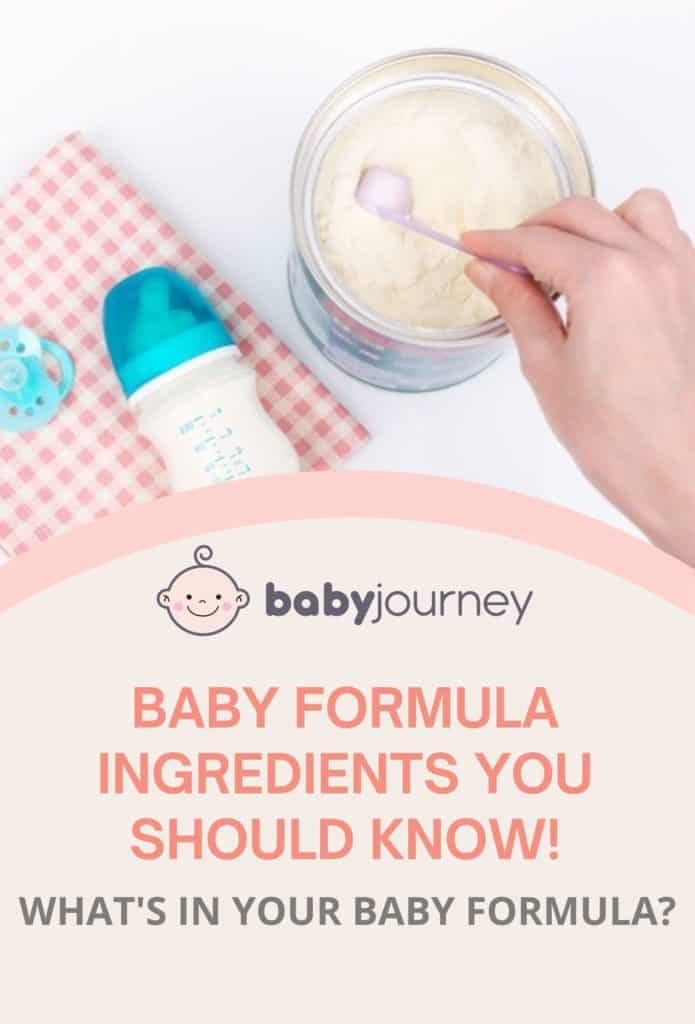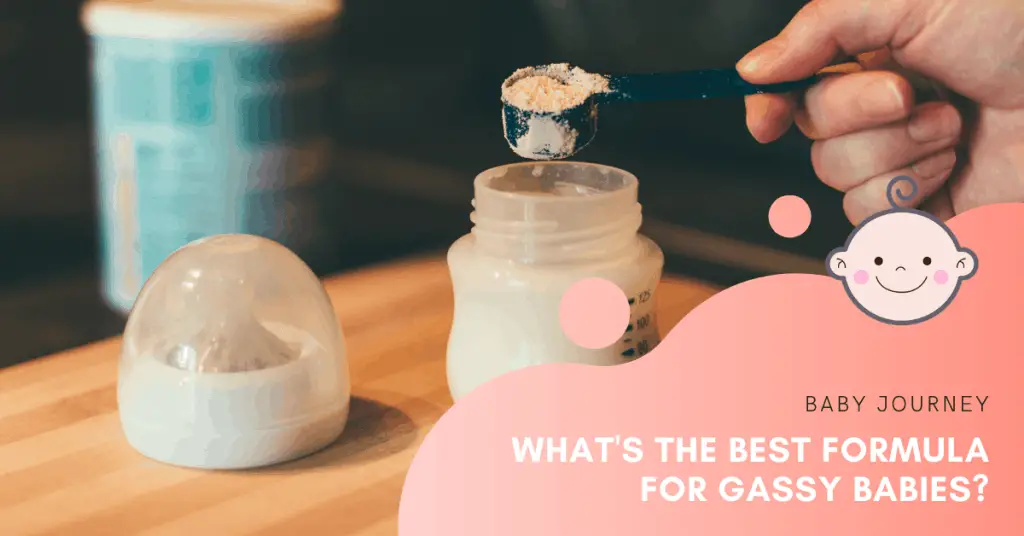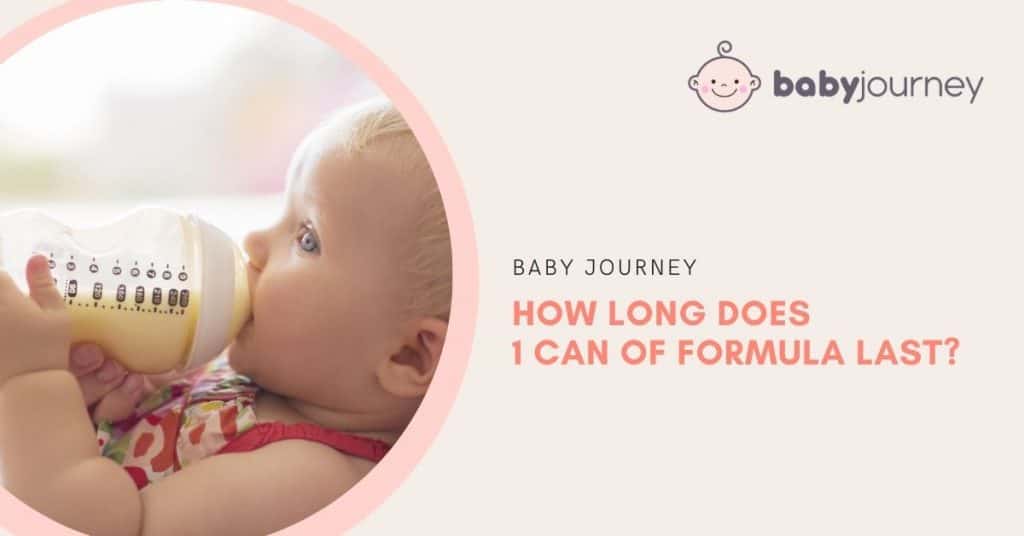It is easy to get overwhelmed with so many options on the baby formula market. If all formulas are solid replacements for breastmilk, why are there so many of them?
Many parents wonder the same. Different products may be safe and beneficial for infants, but the baby formula ingredients differ.
Milk formula is designed to provide enough nutrients and vitamins for infants, just like breast milk.
Let’s cover everything about formulas, the differences compared to breast milk, and more. So, next time you are looking for baby formula, you can turn the package, read the label and choose a formula that taste like breast milk confidently!
- What’s in Breastmilk? Understanding Breast Milk Nutrition
- Types of Baby Formula and Ingredients
- Ingredients in Baby Formula
- What’s in Baby Formula? Baby Formula Ingredients You Should Know
- Ingredients in Baby Formula That You Should Avoid
- Additional Ingredients to Consider
- Are European Formula Ingredients Better Than American Formula?
- How to Choose The Right Baby Formula
- FAQs
- Conclusion
What’s in Breastmilk? Understanding Breast Milk Nutrition
The largest part of breastmilk is water, with up to 90% of water composition within. The rest are proteins, fats, carbohydrates, vitamins, minerals, enzymes, hormones, and antibodies that help the baby build a strong immune system and fight against infections.

According to American Pregnancy Association, breast milk includes up to 60 or 80% of whey protein, and the rest is casein milk protein. [1] Therefore, whey protein is dominant, which makes breast milk easy to digest for infants.
Breast milk contains long-chain fatty acids, which support nervous system development and help the body absorb vitamins A, D, E, and K.
Lactose is the primary carbohydrate in breast milk, and it is in charge of the proper absorption of nutrients.
Micronutrient percentage in breastmilk depends on the mother’s diet. Most likely the breast milk will contain enough of them to support normal growth.
Breast milk is recommended by the WHO vastly because of its beneficial properties. But, in certain situations, formula is the only way to feed the baby. [2] It applies to situations when a mother doesn’t have milk or takes some medicines that could affect the milk quality or quantity.
Breast milk is easier to digest for infants. Studies have shown that babies on breast milk have fewer issues with constipation and diarrhea. Also, breast milk includes all the beneficial vitamins for the baby, except for vitamin D. It is usually administered to babies on formula with breast milk as a supplement.
Types of Baby Formula and Ingredients
In the USA, the FDA regulates baby formula production and sets standards for commercial products. So, the ingredients in formula depend on the type. According to Mayo Clinic, there are three main types of baby formula, and specialized formulas for prematurely born babies. [3]
Cow-Milk Protein Formula
The largest number of the available baby formulas on the market are cow’s milk-based. The formula is suitable for most infants and easy to digest. However, babies with allergies or sensitivities to milk protein need different formulas.

Soy Formula
Soy formulas can be a suitable replacement for infants allergic to cow’s milk. These products are also easy to digest and support normal infant growth.
However, sometimes babies allergic to cow’s milk may also develop allergies to soy milk, so parents need to find an alternative.
Hypoallergenic Formula
When it comes to hyporallergenic formulae, there are two similar options for babies with allergies – hydrolyzed protein formulas and amino-acid based. Proteins in hydrolyzed formulas are essentially cow milk proteins but hydrolyzed to smaller peptides, which makes them easier to digest.
The amino acid-based formula doesn’t have milk content. It is based on amino acids, integral parts of proteins. These have the smallest chances to induce a reaction to proteins from the formula.
The amino-acid-based formulas are the most expensive, and only options for parents whose baby has an allergic reaction to hydrolyzed formulas.
In addition, specialized formulas are available for premature infants and babies who have specific medical conditions.
Ingredients in Baby Formula
Apart from the source of protein in milk formulas, these products include other ingredients to mimic breast milk. The FDA requires the brands to use at least 29 specific nutrients. Furthermore, ten of them must be in the designated amounts. [4]
Some brands use vegetable oils as the fatty source, lactose and a brand-specific mix of vitamins and minerals. Soy and hydrolyzed protein formulas need to include additional ingredients such as biotin, choline, and inositol.
Also, the number of calories in baby formula depends on the combination of the ingredients and is essential for energy and growth.
In most baby formulas, lactose is the primary carbohydrate. According to Similac, the maltodextrin formula is suitable for lactose-sensitive babies. [5]
What’s in Baby Formula? Baby Formula Ingredients You Should Know
According to Elsenutrition, basic formula ingredients are proteins, fats, vitamins and minerals. [6] Each ingredient has its purpose in baby formula and contributes to normal growth and development.
Let’s break things down about baby formula nutrition facts so you know exactly how ingredients in formula work.
Proteins
The proteins in the formula boost cell growth, so they are vital for building organ systems.
Most formulas have cow’s milk proteins, as those resemble the breast milk proteins the most. The alternatives for babies who have allergies are soy, hydrolyzed proteins and amino-acid-based proteins.
Fatty Acids
Fatty acids in infant formula usually contain a simplified blend of vegetable oils, to mimic the structure of fatty acids in breast milk. Fats provide calories and energy, supporting brain and eye development in infants.
Linoleic Acid
Linoleic acid is one of the essential ingredients in baby formulas, it supports sufficient feeding. The American Association of Pediatrics suggests that linoleic acid is beneficial for babies with cystic fibrosis. [7]
Vitamins
FDA regulates the compound of vitamin in baby formulas sold on the USA market. So, each formula contains the following vitamins:
- A, C, D, E, K
- Vitamin B complex: B16, B12, niacin, pantothenic acid, riboflavin, thiamine, folic acid
Different vitamins in baby formula promote skin and bone health, muscles and tooth growth, immune and cardiovascular system development.
Minerals
The same applies to minerals. Here is a list of minerals in baby formulas:
- Calcium
- Chloride
- Copper
- Iodine
- Iron
- Magnesium
- Manganese
- Phosphorus
- Potassium
- Selenium
- Sodium
- Zinc
Calcium helps the babies to develop strong bones, chloride and iodine support the metabolic processes, and copper boosts red and white blood cell maturation.
Next, magnesium is good for muscles and other minerals work to help the baby build a strong immune system, and encourage growth. Also, all minerals in formulas are added to replicate the mineral content of breast milk.
Taurine
Breast milk also contains taurine, an amino acid, that improves fat absorption. According to the article published in the peer-reviewed book series “Advances in Experimental Medicine and Biology”, taurine in baby formula minimizes the differences between breast milk and artificial formulas. [8]
The same source also suggests that taurine helps sensory development and prevents electric impulse issues and granulation in the brain.

Ingredients in Baby Formula That You Should Avoid
Apart from questioning what’s in a baby formula, you need to think about what shouldn’t be in it. Potentially harmful ingredients in baby formula that you should avoid are the following.
Palm olein oil
In some baby formulas, palm olein oil is a fat source. However, studies showed it inhibits fat and calcium absorption. Therefore, it can negatively affect bone density and energy in infants.
Heavy Metals
The study from 2019 showed that some baby formulas in the USA contain lead, arsenic, cadmium, and mercury. [9]
These heavy metals affect IQ development negatively. Lead and cadmium were found in the largest amounts in baby formulas and baby snacks, especially in products with rice.
Artificial Flavors, Colorings, Stabilizers
When it comes to infant, toddlers and children’s diets, choose options without artificial colors and flavorings. Still, there isn’t scientific evidence that these ingredients cause medical conditions such as ADHD, but one study which included 30 years of research showed that they can cause ADHD-like symptoms in infants and toddlers. [10]
Carrageenan is an artificial stabilizer that doesn’t have any benefits for the baby and doesn’t add nutritional value or flavors to the formula. It is added mostly to ready-to-feed formulas, and it prevents the nutrients from falling down on the bottle.
Carrageenan might seem useful for babies who have trouble eating the whole dose at once, but it is an artificial ingredient. It is unnecessary and isn’t found in breast milk, which is what a formula is supposed to be resembling.
Additional Chemicals
Some cow’s milk-based formulas can contain hormones, antibiotics and pesticides because of the animal agriculture practice. If possible, find a formula that is tested for these chemicals and doesn’t contain them.

Additional Ingredients to Consider
There is an ongoing confusion among parents in the USA about two ingredients – added DHA and ARA chemicals in baby formula and corn syrup.
Further reading: Corn Syrup in Baby Formula
DHA and ARA
DHA – docosahexaenoic and ARA – arachidonic acid are long-chain fatty acids, compounds of breast milk.
The initiative to include DHA and ARA in formulas may occur from studies on eight-year-old children. [11] The results showed children fed with breast milk tend to have a higher IQ than peers fed with formula. Despite so, there isn’t enough scientific evidence to support the claims that adding DHA and ARA in formulas helps reduce the differences.
Instead, some sources suggest that DHA and ARA supplements prevent allergies and improve respiratory systems in infants. [12] On the contrary, higher levels of DHA and ARA than those in breast milk can cause stunted growth.
So because of the lack of scientific evidence and unified recommendations, parents have to determine their stance about DHA and ARA. Talking with your pediatrician who is fully aware of your baby’s condition and development might help you decide whether to choose a formula with DHA and ARA, supplements or not to give them at all.
Corn Syrup
If you are wondering why is there corn syrup in baby formula, here is what the controversy is about. Corn syrup is FDA-approved, and therefore, a safe ingredient that works as primary carbohydrates in amino acid-based products. It gives energy to your baby.
But, in the USA, corn syrup in the formula comes from GMO corn. Therefore, corn syrup isn’t harmful itself. The chemicals used to grow the corn are the issue.
Ultimately, the decision about corn syrup in the formula is really up to you. You can either administer organic formula to your baby, choose corn syrup free formula, or ignore the issue and use standard formula.
Are European Formula Ingredients Better Than American Formula?
Lately, parents who aren’t sure what is baby formula made of on the US market believe that European options are better.
Proteins, vitamins and fats are primary ingredients in all approved USA formulas. They are good for your baby and completely safe.
European formulas don’t meet FDA labeling regulations, according to the research from a few years ago. [13] Moreover, European baby formulas distributed through third-party vendors don’t comply with FDA protections that ensure infant formula safety. The same source states that most European formulas available on the USA market lack linoleic acid and contain less iron.
What is also raising concerns about European baby formulas is the lack of knowledge about them and unsafe purchase over the internet.
On the other hand, some sources, such as littlebundle, state that European formulas are better because of the simpler ingredients and absence of corn syrup in baby formula. [14]
Key Takeaway
To sum up, when deciding between the USA and European baby formula, talk with your pediatrician, compare the ingredients list in terms of nutrients value and choose a trustworthy seller.
Ultimately, the health aspects of the baby formulas aren’t determined by the geographical origin, but ingredients list. European formulas have simper labels, which makes them easier to read and comprehend.
However, buying products that aren’t FDA-regulated and available through authorized sellers in the USA market comes with risks related to quality, expiration dates, etc. There are plenty of good and safe products on the USA market, tested and regulated by national standards, such as Enfamil baby formula.
How to Choose The Right Baby Formula
There are several factors you need to consider when choosing a baby formula for your child. Let’s go briefly through each one, so you can choose the product confidently.
Protein Source
Most formulas have dairy-based proteins, but if your baby is lactose-intolerant or has a cow’s milk allergy, the alternatives are soy or hydrolyzed protein-based formulas. Soy is often a genetically modified ingredient, so if you need cow’s milk alternative formula, look for organic products.
In some cases, a goat’s milk-based formula can be a suitable alternative, but I recommend consulting your pediatrician if your child has allergies.
Additional Ingredients
Apart from required ingredients in baby formulas, some products contain additional ingredients. For example, specialized formulas for prematurely born babies are richer in calories to help the babies catch up with normal growth.
Formulas with rice starch may be good for babies with reflux.
Lastly, there are some baby formulas with probiotics on the market, claiming to support a healthy gut and help babies overcome cramps. But, there isn’t enough evidence that supports these claims.
Expiration Date
Checking the expiration date might seem like trivia advice, but it is always better to double-check the expiration date. You don’t want wastage of formula, but in any case you find yourself with expired formula, check out this article on what to do with expired baby formula to repurpose th
Age-Appropriateness
From birth, use the formula which is specifically labeled for infants from birth to later age. Once the baby overgrows the infant period, you can continue with a follow-up formula until the age of one.
Fat Source
Fat sources in baby formulas are a blend of vegetable oils, specifically coconut, sunflower, palm oil, etc. If you are worried about fat absorption, choose a formula with less palm olein content.
Form
Baby formulas are available in three forms. Powder formula is the most affordable. You need to dilute the exact amount of powder in the designated amount of water.
Next, you can get a concentrated liquid formula, it is easy to mix with water.
Lastly, ready-to-use products are expensive and the easiest to use. These are great for travel and busy mums.
Consult Your Pediatrician
If your baby has a medical condition, is born prematurely or has allergies, it is always better to talk with your pediatrician about the best options.
FAQs
Let’s break things down the additional aspects of baby formulas that are common concerns for parents.
What is a good substitute for baby formula?
Breast milk or baby formula are the only two available ways to feed infants. Even though you may find recipes for homemade baby formula online, these aren’t tested like commercial products.
Additionally, some recipes include raw milk and other potentially harmful ingredients.
What is GMO in baby formula? Is GMO bad for the baby?
An infant doesn’t have a fully developed liver, so he or she cannot process toxins from genetically engineered foods. If you need a formula with corn or soy, consider organic products, because these two foods are the most affected by GMO food production.
Do all baby formulas have the same ingredients?
Formulas sold in the USA are under the jurisdiction of the FDA and need to be approved. Each baby formula product needs protein, fat, carbohydrates, vitamins and minerals to be approved.
While these compounds are the same in all baby formulas, their sources are different. For example, one may offer lactose as a primary carbohydrate, and the other can include corn syrup for that purpose. Also, specialized formulas may include additional ingredients.
Conclusion
Choosing the only source of food for your baby can be stressful because there are so many baby formulas on the market. When deciding on a baby formula, check the source of the must-have ingredients such as proteins and fats, and check if any ingredients raised red flags.
You can always discuss your doubts with your pediatrician and replace the formula if your baby doesn’t respond well to it.
Buy from authorized sellers and check the expiration date!
Pop a question in the comment section below if you have any!
—




